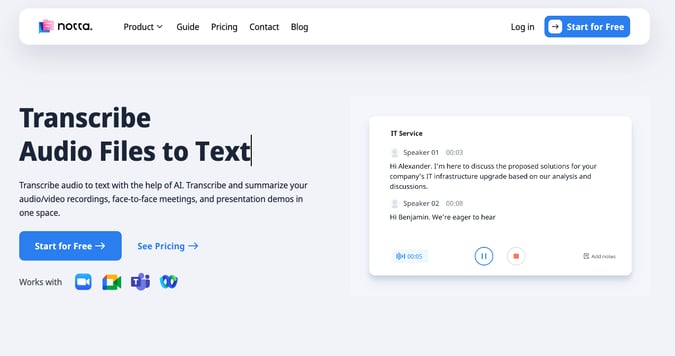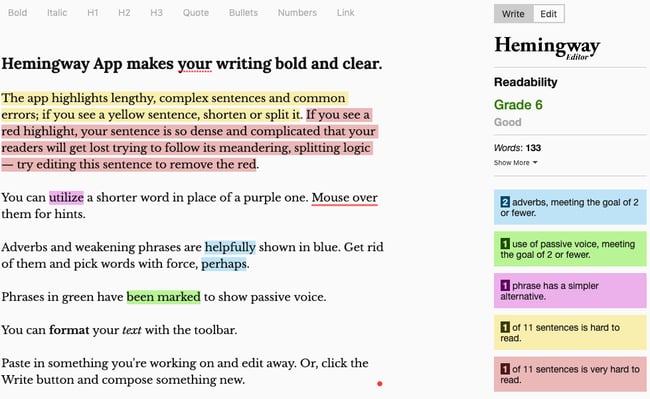With the right blogging tools, you can generate more leads, foster trust with your readers, and improve rankings on search engines. From planning to search engine optimization to promotion, there are tools available to maximize your blogging efforts.

In this post, we'll look at some tools that will help you write better, publish faster, and rank higher on search engines, so you can attract more visitors and quality leads to your blog.
Blogging Tools
- Content Hub
- WordPress
- Ghost
- Make My Persona
- Semrush
- Keyword Planner
- Google Trends
- Quora
- Twitter Topics
- Trello
- Notta
- Blog Ideas Generator
- Portent's Content Idea Generator
- EMV Headline Analyzer
- Hemingway App
- Grammarly
- All in One SEO
- Yoast SEO
- Google Search Console
- MAXG
- Databox
- GTmetrix
- Check My Links
- Death to Stock
- Skitch
- Design Wizard
- Canva
- VistaCreate
- HubSpot's Free Marketing Tools
- Moosend
- BuzzSumo
- Buffer
- Movavi Video Editor
To reap the benefits of blogging, you have to invest time and effort into finding the right tools to super-charge your blog. Luckily, you don’t have to search for the right tools. We’ve compiled them right here.
Before we get started, it's important to note that we focused on tools that work with most website-building platforms, but you should double-check that they work with your specific platform before downloading them.
If you're using a CMS, you're in good shape. The best CMS systems not only support integrations with many of these tools — they come with some of these functionalities built into their platform, so you don't have to keep purchasing and adding apps to your tech stack.
We’ll go over some of the best tools you can use for:
Blog Hosting
To start, you need a hosting platform for your blog. Ideally, this platform will provide the page speed, SEO features, and security you need to create and grow a successful blog.
1. Content Hub

Get started with the free blog maker
With Content Hub, you'll get a blogging platform that's fully integrated with HubSpot’s marketing, sales, and service tools — and comes with a built-in CRM.
That means you'll get the functionality you expect from other platforms, like an intuitive blog editor and an option to preview how your post will look on any device before you publish it. You can also add CTAs and forms.
Content Hub also includes robust blogging and landing page tools to create search engine optimized content, based on the best practices laid out in HubSpot’s knowledge base.
Additionally, you can conduct A/B tests and add a live chat widget to the front end of your site. These features can improve conversion rates by optimizing the look and interactive aspects of your website in measurable terms.
Best For
We recommend Content Hub for both new and established bloggers, as well as small-to-enterprise businesses. It offers everything you need to create a high-performing blog without needing to worry about downloading external plugins and themes. Because it offers strong support from HubSpot, it’s ideal for bloggers who want the support of a company if they run into any issues.
2. WordPress
WordPress is a highly flexible platform for blogging. With a drag-and-drop block editor and over 80,000 plugins and themes, you can create a customized blog with the exact look and feel that you want. Just make sure you have the time and resources to invest in purchasing, downloading, and maintaining third-party tools and templates. Better understanding of their functionality can lead to more successful execution that readers will enjoy navigating through in a professional blog.
Best For
We recommend WordPress for bloggers who want to create a highly customizable blog on both the front- and back-end of their website. It’s also ideal for you if you have the time, money, and experience to manage the design and maintenance process of a WordPress website. Once you make it work for you, WordPress is a great CMS.
3. Ghost
If you're looking for a more lightweight CMS that's dedicated to blogging, Ghost is an excellent WordPress alternative. It offers an intuitive editor, built-in SEO tools, responsive layouts, and an out-of-the-box email subscription so you can easily create and manage a blog.
Best For
We recommend Ghost for experienced bloggers and marketers who are looking for a customizable blogging platform. It’s especially a good fit for you if you want a built-in analytics tracker, although it’s worth noting that Content Hub and WordPress both offer analytics tools. Whether you choose Ghost depends on your budget requirements and user interface preferences.
Blog Planning
The following tools will help you define your target audience, find topics that appeal to that audience, and overcome writer's block so you can plan your blog strategy.
4. Make My Persona
 One of the first steps in creating a blog strategy is establishing who you're writing to. Make My Persona is a free tool by HubSpot that will walk you through the process of building a reader persona.
One of the first steps in creating a blog strategy is establishing who you're writing to. Make My Persona is a free tool by HubSpot that will walk you through the process of building a reader persona.
Reader personas are fictional representations of your ideal readers that you can use to plan and create blog content that addresses their goals, behaviors, and concerns. Creating reader personas will not only ensure you’re creating the right content for the right people — it will also help inform the tone and style of your blog as you write.
Best For
Make My Persona is a fantastic tool for bloggers and marketers at freelance-to-enterprise businesses. It’s an essential tool for creating ideal personas and buyers for your target readership. It will help you hone in on your reader’s needs much more effectively than if you were to write to an unknown public.
5. Semrush
You can take your blog planning to the next level with Semrush. Semrush is a premium tool for keyword research, keyword rank tracking, site audits, and traffic analysis. With Semrush, you can find long-tail keywords that have the best chance of ranking for organic traffic.
You can also use this tool to advance your search engine marketing efforts and out-rank your competitors on search engine results pages (SERPs). Semrush not only allows you to discover your main paid search competitors and figure out which keywords they're bidding on — it also enables you to study their regional presence and composition of their ads. This information is essential to creating and managing your own paid strategy.
Best For
We recommend Semrush for bloggers and marketers who are familiar with keyword research at an intermediate-to-advanced level. If you identify as a beginner, you might have trouble navigating Semrush’s wide variety of features. As such, you might end up not using the full potential of your Semrush subscription. We recommend trying Keyword Planner instead.
6. Keyword Planner
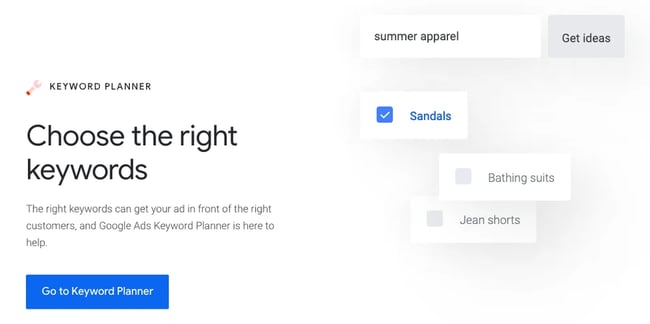
For a free and simpler alternative to Semrush, you can use Keyword Planner. This SEO tool can help you research keywords and plan your content strategy. You just have to enter a keyword and the tool will auto-generate the search volume of that keyword as well as related words and phrases.
While the tool is designed specifically for ads, many bloggers use Keyword Planner for their content as well. For example, Brian Dean, the founder of Backlinko, increased his site’s organic traffic from to around 300K visits per month with the help of this tool.
Keyword Planner is free to use, but you’re required to have a Google Ads account to use it.
Best For
We recommend Keyword Planner for beginner bloggers and marketers who are starting to navigate the ins and outs of keyword research. It’s especially a good fit for you if you’ve set up Google Ads before or if you’re planning on doing it in the future.
7. Google Trends
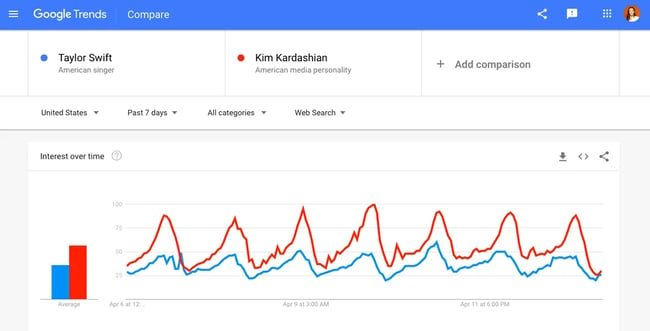
Many bloggers use Keyword Planner in combination with Google Trends because any keywords identified by Keyword Planner can be run through Google.
You'll see how its search volume fluctuates over time, how it performs in specific regions, and what topics and queries are related to this keyword. This can help you create a content strategy that incorporates seasonal trends, attracts a global audience, and includes related keywords that people are looking for.
Best For
We recommend Google Trends for freelance bloggers, marketers, and small-to-enterprise businesses who need to understand the popularity of their product, service, or industry over time. That way, you can plan future content accordingly. It’s an essential tool for anyone who’s publishing content online, and the best part is that it’s free.
8. Quora
![]()
Quora isn’t just a site for engaging with and building an online community — it's also a great place to find ideas for your blog.
Quora is a crowdsourced Q&A website, where users can post questions and get answers from anyone. Scanning this site will uncover questions that get asked most frequently by real people. This can be a great way to supplement your keyword research. Quora is free to use — you'll just have to create an account.
Best For
We recommend Quora for any blogger or marketer who wants to find content ideas for their blog without needing to pay for a more extensive tool such as Semrush. It’s a highly scalable tool that will serve the needs of bloggers just starting out and bloggers with a more established readership.
9. Twitter Topics
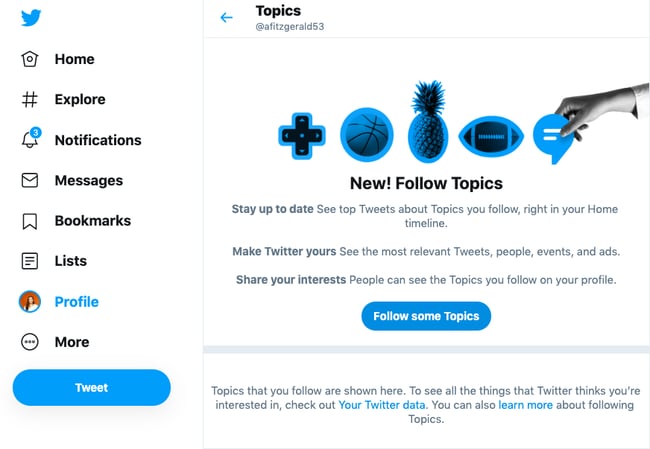 You can implement a similar strategy on Twitter, using Twitter Topics. It allows users to select and follow trends they're interested in from a list of "Topics."
You can implement a similar strategy on Twitter, using Twitter Topics. It allows users to select and follow trends they're interested in from a list of "Topics."
For example, say you follow the Topic "SEO." Then news and tweets related to SEO will start showing up in your Twitter feed automatically. This will help you stay up to date on the latest discussions around SEO, which can inform your blog strategy.
Best For
Twitter Topics is an excellent tool for freelance bloggers and marketers at small-to-enterprise firms who need to understand which industry topics are generating “buzz.” It’s especially a good fit if your blog focuses on news and journalistic content, because Twitter is all about buzz, trendiness, and recency. If you’re planning to write more evergreen content, we recommend using Quora and Semrush instead.
10. Trello

So far, we’ve listed a few of the many tools and platforms you might use to generate blog ideas. To stay organized, you can put them all in one place using Trello.
Trello is a visual collaboration platform that's ideal for task management. On Trello, you can create a card for every blog post which includes the title of the post along with any additional notes. You can then assign these cards to writers, add a due date, create checklists for each assignment, and organize them into categories with color-coded tags. Below is an example.
Trello is free to use, but there are paid plans available for bloggers that want to connect their board to Google Drive or need other advanced features like keyboard shortcuts or workflow automations for each board.
Best For
Trello is an essential project management tool for small-to-medium businesses with a team of writers and bloggers. It can also work for freelance writers or one-person marketing teams if you’d like to organize your content writing efforts in one unified place. If you don’t like Trello, you can try Asana instead.
Blog Writing
Now that you've identified some keywords to target, it's time to start writing. Below are some tools that can optimize your headlines, strike the right tone and style for your blog, and ensure your content is free of grammar and spelling mistakes.
11. AI Blog Writer
%20hubspot%20ai%20blog%20writer%20drafting%20outline.png?width=540&name=(hero)%20hubspot%20ai%20blog%20writer%20drafting%20outline.png)
Get started with the AI Blog Writer
Designed for blog posts, you can use HubSpot's AI Blog Writer to create new content by giving it prompts or topics. Furthermore, the Blog Writer features built-in reporting capabilities so you can measure the ROI of your blog posts.
The AI blog writer also integrates with HubSpot's blog software.
Best For
Whether you need a paragraph or an entire blog post, HubSpot's AI Blog Writer has got you covered. We recommend this tool for writing high quality blog copy.
12. AI Content Writer
%20hubspot%20ai%20content%20writer%20editing%20email%20copy.png?width=540&name=(hero)%20hubspot%20ai%20content%20writer%20editing%20email%20copy.png)
Get started with the AI Blog Writer
If you're looking to create content, such as emails, landing pages, blog posts, or social media posts, HubSpot's AI Content Writer can generate that for you. Simply provide the audience, the intended message, the desired length, and the tone you want to set. Additionally, for quick ideas and inspiration, you can use the software to generate outlines, headlines, and content suggestions.
Best For
We recommend the AI Content Writer for idea generation. The software does more than generate copy; it can help you brainstorm ideas for outlines, headlines, and topics.
13. Notta
Sometimes, brilliant ideas come to us, but they often slip away before we can record them. Even if we hastily jot down words, we may not understand the feelings behind them when revisiting them later. That’s where Notta and AI transcription software come in handy. With efficient transcription speed, Notta is crucial for web writers to brainstorm, process, and develop concepts and blog ideas. Its smooth transcription leads to a shorter overall time spent on article creation, resulting in increased hourly rates.
Best For
We recommend Notta for those seeking enhanced efficiency in organizing, sharing, and editing information, and is an excellent choice for bloggers, professional writers, and journalists.
14. Blog Ideas Generator

Now that you know your target audience and have some keywords that you're targeting, you need to get started writing. If you need some help turning your keyword research into content, go to HubSpot's Blog Ideas Generator.
You can enter up to five words that represent topics you want to write about in the search bar. Then click "Give me Blog Ideas" to see an auto-generated list of five blog ideas.
You can also fill out a form to access a year’s worth of blog ideas and details on how to advance your SEO strategy. This tool is completely free to use, so it’s worth giving it a try if you’re not sure where to start.
Best For
We recommend Blog Ideas Generator for beginner bloggers and content marketers who aren’t sure what to do with the keyword research they’ve just completed. It’s also useful for advanced bloggers and marketers who don’t know what to write about next. At the very least, it’s a tool you keep bookmarked just in case you run out of ideas.
15. Portent's Content Idea Generator
Like HubSpot's Blog Ideas Generator, Portent's Content Idea Generator provides headlines based on the keyword you type into the search bar. Designed to get both clicks and links, these headlines are intended to be "funny and shocking," according to the company site.
While this won't work for all brands, it might work for your blog, particularly if you're looking for a boost in social traffic.
Check out the attention-grabbing example generated when I typed in "blogging" below.

Best For
We recommend Portent as a backup to HubSpot’s blog ideas generator. You can also use it in conjunction with HubSpot’s tool to get as many ideas as possible and start booking your content calendar well in advance.
16. EMV Headline Analyzer
 The EMV Headline Analyzer calculates the emotional marketing value of headlines. Emotional marketing refers to the practice of using emotion to make your audience notice, remember, share, or otherwise respond to your content.
The EMV Headline Analyzer calculates the emotional marketing value of headlines. Emotional marketing refers to the practice of using emotion to make your audience notice, remember, share, or otherwise respond to your content.
After typing your blog title into the search bar, this tool will search for and analyze the emotional words in your headline. It will then give you a score based on its emotional appeal, with a brief explanation. Titles with scores between 30% and 40% will stand out in SERPs and social feeds.
Best For
We recommend the EMV Headline Analyzer for marketers and bloggers who want to optimize their emotional marketing efforts and attract more readers. While emotional marketing serves all industries, it’s most useful for bloggers in the hospitality, beauty, healthcare, and food industries. If you’re looking for a more SEO-centric title testing tool, try CoSchedule’s Headline Studio.
17. Hemingway App
We know that it takes more than a catchy headline to create a good blog post. To keep your audience engaged from the headline to the conclusion, you need to make sure your text is readable.
Hemingway App is a free tool that analyzes your text's readability. It highlights any sentences that are complex or dense, use passive voice, or have too many adverbs, so you can edit accordingly. This editor will also calculate a readability score so you can ensure your writing aligns with your reader persona's vocabulary and comprehension.
Best For
We recommend Hemingway App for any blog writer who needs to reduce errors, clichés, and redundancies in their writing. It’s a better fit for shorter pieces that are light on images and features only basic formatting, because you can’t use Hemingway App in a rich-text editor such as Google Docs or Microsoft Word. However, it’s ideal for distraction-free writing and editing.
18. Grammarly
In tandem with the Hemingway App, you can use Grammarly to write engaging and grammatically-correct blog posts. The premium version of Grammarly will not only check your spelling, grammar, and punctuation, but it will also recommend vocabulary enhancements and detect any instances of plagiarism.
You can choose to draft or copy and paste your blog posts into the Grammarly editor. You can also install Grammarly as a Google Chrome browser extension to offer suggestions as you write in Google Docs, Twitter, LinkedIn, and other sites.
Best For
We recommend Grammarly for blog writers and marketers who need an advanced editing tool that integrates with the writing tools they’re already using. Because it works in Google Docs and on the web, it’s ideal for editing long pieces that you don’t want to copy and paste over into a separate grammar checker. If you’re also doing social media marketing in addition to blogging, you can use Grammarly to double-check your social copy before pushing it live.
Blog SEO
We've already discussed a few SEO tools that you can use to maximize your blog planning efforts, including Semrush, Keyword Planner, and Google Trends. Now let's look at some SEO tools that will help during the writing and publishing phases.
19. All in One SEO

All in One SEO (AIOSEO) is a complete SEO plugin for WordPress. You can use this plugin to get an in-depth analysis of your on-page optimization. All you need to do is set your focus keyword for any post or page, and AIOSEO will check your content for errors and provide you with actionable tips to unlock maximum traffic.
It will also score the readability of your content and even provide tips on optimizing your title tags so that you can improve your click-through rate.
Other key features include image SEO, schema markup, social media integration, dynamic smart tags for titles and meta descriptions, and much more.
Best For
We recommend All in One SEO for writers and bloggers who are hosting their site on WordPress and who need SEO guidance as they create new blog posts. It’s the closest alternative to the SEO tool in Content Hub, offering similar benefits that will help you write SEO-optimized posts.
20. Yoast SEO
Yoast SEO is designed to improve your blog’s on-page SEO. Like the Hemingway App and Grammarly, Yoast SEO analyzes the readability of your text, offering suggestions to improve grammar, sentence structure, reading level, and more.
What sets Yoast SEO apart from other tools is its SEO analysis. This tool will offer suggestions for adding keywords, optimizing meta descriptions and URLS, and adding internal links.
While some platforms like Content Hub will provide these SEO recommendations as you write, other platforms will require you to use Yoast SEO to optimize your blog. Yoast SEO is most frequently purchased and downloaded on WordPress websites, but it's also compatible with Magento, Drupal, TYPO3, and Neos CMS.
Best For
We recommend Yoast SEO as a strong alternative for the SEO tool in Content Hub and All in One SEO. It’s especially ideal for you if you’re using an CMS that’s not Content Hub or WordPress, because Yoast SEO is compatible with additional content management systems. It offers in-depth guidance to optimize your blog posts and help them rank in search engines.
21. Google Search Console
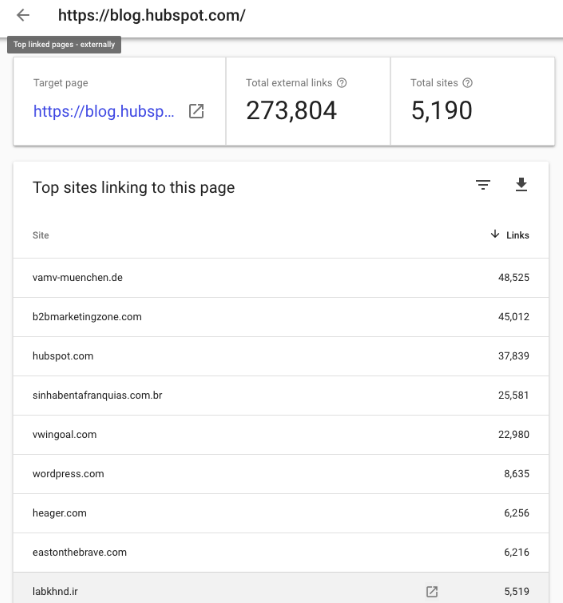
For more insight into how SEO-friendly your site is, you can ask Google. With Google Search Console, you can understand how your blog appears to search engines in terms of click-through rates, search queries, crawl errors, HTML errors, and backlinks.
Similar to Yoast SEO, Google Search Console highlights problem areas and opportunities for improvement to boost your blog's visibility in SERPs. And it's free to use — you just need a Google account.
Best For
Google Search Console is an essential tool for all bloggers and marketers who want to track their blog’s performance in Google and improve their posts’ rankings. It’s specially ideal for you if you run your web hosting account. If you don’t have access to your web hosts’ settings, it might be difficult to verify your ownership of your website, which is required before you can begin using Google Search Console.
22. MAXG
MAXG, short for Marketing Advisor for eXponential Growth, is a premium tool designed to help you turn data into directions. Unlike traditional analytics dashboards, MAXG uses AI to provide recommendations for improving the performance of your content, from blog posts to CTAs to landing pages and email campaigns.
These recommendations are paired with supporting data so you can understand why these improvements are necessary. You can then assign the action items recommended by MAXG to different users.
MAXG currently integrates with HubSpot and Google Analytics and is looking to incorporate data from Semrush, AdWords, and other tools in the future.
Best For
We recommend MaxG for advanced bloggers and marketers who already have experience with other SEO tools such as HubSpot’s SEO software, Semrush, Google Search Console, and Yoast SEO. Because it offers advanced (yet digestible) analytics on conversion rate, email click-through-rate, and leads, it’s a good fit if you’ve already established a blogging strategy and simply want to gauge your performance.
23. Databox
Just as you can use Trello to keep all your ideas in one place, you can use Databox to view all of your performance data together. Rather than wasting time logging into multiple tools to see how your blog is performing, you can mix and match metrics from different sources in one Databoard for a more complete view of your site’s performance. This means less time spent checking data and creating reports and more time actually acting on data.
Best For
Databox is an essential tool for seeing all of your metrics in one place without needing to log in to different apps. We specially recommend it for marketers and bloggers who report to senior managers and directors on their blog’s performance. Databox makes it easy to compile all of your performance information and distill it into insights.
24. GTmetrix

Let's say your data points to a problem with page speed. In that case, you can use a free tool like GTmetrix to analyze your blog's speed on desktop and mobile. Just type in your URL and GTmetrix will provide a score as well as ways to reduce your website page speed.
Best For
We recommend GTmetrix for any marketer or blogger who doesn’t yet have a preferred performance tracking tool. If, for instance, you’re using PageSpeed Insights or Lighthouse to measure your website’s performance, you may not need GTmetrix. However, it makes a great starting point for those who have little experience tracking their site’s performance.
25. Check My Links
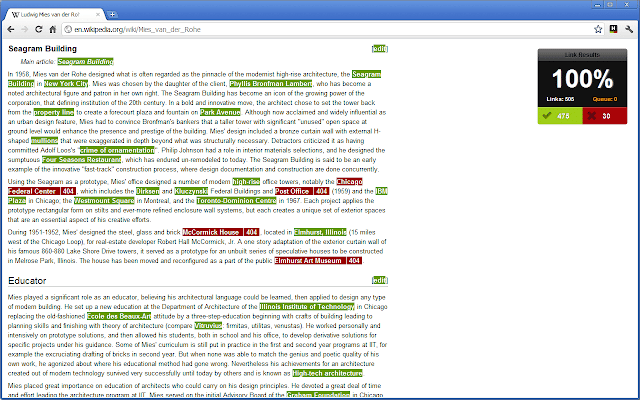
Because all search engine algorithms take links into account, link building is an essential aspect of SEO. That means you need to devote time and resources not only into adding internal links and getting backlinks to your blog, but also ensuring that those links are working.
To help automate this process, you can use Check My Links. It's a free Google Chrome extension that crawls through web pages to check for broken links. Registering and reporting all of the broken links on a site within 20 to 30 seconds, it's one of the fastest link checkers you can use.
Best For
Check My Links is an essential tool for any blogger or marketer who wants to keep their blog posts’ links up to date. It’s ideal for one-time link checking, specifically in Chrome. If you’d like a more extensive tool that doesn’t require you to be a Chrome user, you can use Screaming Frog’s SEO Spider instead.
Blog Images
Considering that blog posts that include images get over 90% more total views than those without, it's essential to know where to get quality images for your blog. Such images can make your content more engaging and memorable, and enhance the overall reader experience on your site.
26. Death to Stock

Death to Stock is an artist-owned co-op offering a premium subscription to high-resolution lifestyle photos. Every month, over 35 new photos are added to the library so you never run out of options. You'll also be able to access and search its full archive, which contains over 4,500 photos.
Best For
Death to Stock is a blogger or marketer’s go-to tool for blog post images, carousels, galleries, and headers. It’s highly recommended for bloggers in more “aesthetic” or artistic industries, since Death to Stock offers unique visuals. If you’d like more traditional stock images, try Unsplash.
27. Skitch
When writing how-to articles or other types of blog posts, it can be helpful to include screenshots and annotate them with notes, arrows, and icons. To create and add this type of media, you can use Skitch.
Skitch is free to download, but you will need an Evernote account to use it.
Best For
If you identify as a visual learner and your readers do, too, Skitch is a tool like no other that will allow you to visualize ideas for free. It’s also useful if you’d like to annotate research articles and web pages as you gather information for your blog posts.
28. Design Wizard
If you'd like to create different types of media, like graphics or videos, then you can use Design Wizard. Design Wizard is a freemium tool that enables you to create visual content with no professional editing experience required.
Design Wizard has hundreds of design templates that you can use as inspiration or you can download and customize one for your blog for as little as one dollar. If you upgrade to a paid plan, then you can download up to 60 designs per month.
Best For
We recommend Design Wizard for any freelance blogger or single marketer who’s planning to create media files in a variety of sizes, formats, and mediums. If, for instance, you’re planning to promote your blog posts over social media channels, Design Wizard is a useful tool for creating a social graphic at the same time you create a blog post banner. It’s also ideal for you if you’re planning to create video files.
29. Canva
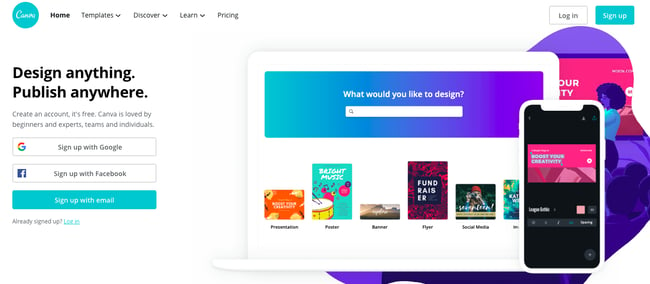
Canva is another great tool for creating branded images and templates. In fact, using image templates was one best practice that helped HubSpot octuple its image search traffic to the HubSpot blog in one year.
To implement a similar strategy on your site, you can use Canva. To start, you'll choose from a collection of professional templates, add an image from its built-in photo library or upload your own, and then layer in some text.
Canva is free to use, but you can upgrade to its paid plans for more templates and advanced functionality.
Best For
Canva is an ideal design tool for large blogging teams and enterprise-level marketing teams. While freelancer bloggers and small marketing teams will also benefit from using Canva, the tool shines because of its strong collaborative features. It allows a blogging team to create a library of branded templates, for example. We recommend it as a strong alternative to Design Wizard if you need more powerful design and collaboration features.
30. VistaCreate
Another easy-to-use tool that offers multimedia editing options is VistaCreate (formerly known as Crello).
This online editor is a one-stop shop for static and animated graphic designs with over 650,000 stock photos ready to be put in your latest blog post. It features premade HD animations and video clips for you to optimize your web page according to your desired theme.
VistaCreate is an amazing option for those who want to quickly make designs for their favorite social media platforms.
Build modern graphic designs from VistaCreate’s wide range of templates images, or personalize it with your own. This service is free but provides budget-friendly pricing to those trying to work more extensively in a team or take advantage of online support.
Best For
We recommend VistaCreate for bloggers and marketers at small businesses who need powerful features, templates, and collaboration tools at a cheaper price tag. For a 10-person Canva subscription, for example, you would pay $48/month, while VistaCreate offers a flat subscription of $10/month. Keep in mind, however, that Canva does offer more templates and stock photos.
Blog Promotion
Once the writing is done, you’ll want to promote your blog so that your target audience can find, read, and share it. After all, what's the point of going through the trouble of planning, writing, and optimizing your blog if you don't bother promoting it?
Below are some tools that can help get your content in front of the right people at the right time, so you can convert visitors into leads.
31. HubSpot's Free Marketing Tools
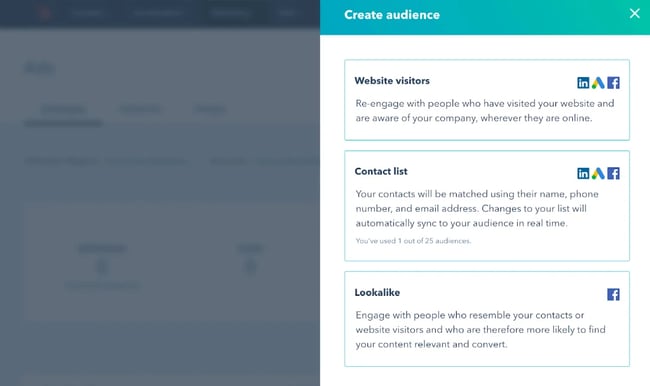
HubSpot's free marketing tools — including ads, email marketing, live chat, forms, reports, and more — are powered by the HubSpot CRM so you can convert more of your visitors into leads
With these tools, you can include CTAs to sign up for a blog newsletter and begin converting readers into subscribers. You can easily see which blogs are converting best, which need to be optimized, and which topics you should be writing about. And, you can promote your content in targeted Facebook, Instagram, LinkedIn, and Google Ads with the free ad tools.
Best For
HubSpot’s free marketing tools are an essential addition to any blogger or marketer’s tool set. It will help you market your blog over email marketing and social advertisements, which will grow your audience. If you’re a blogger at an enterprise-level team, you can upgrade to a premium Marketing Hub subscription, which offers additional functionalities and features to grow your enterprise blog.
32. Moosend
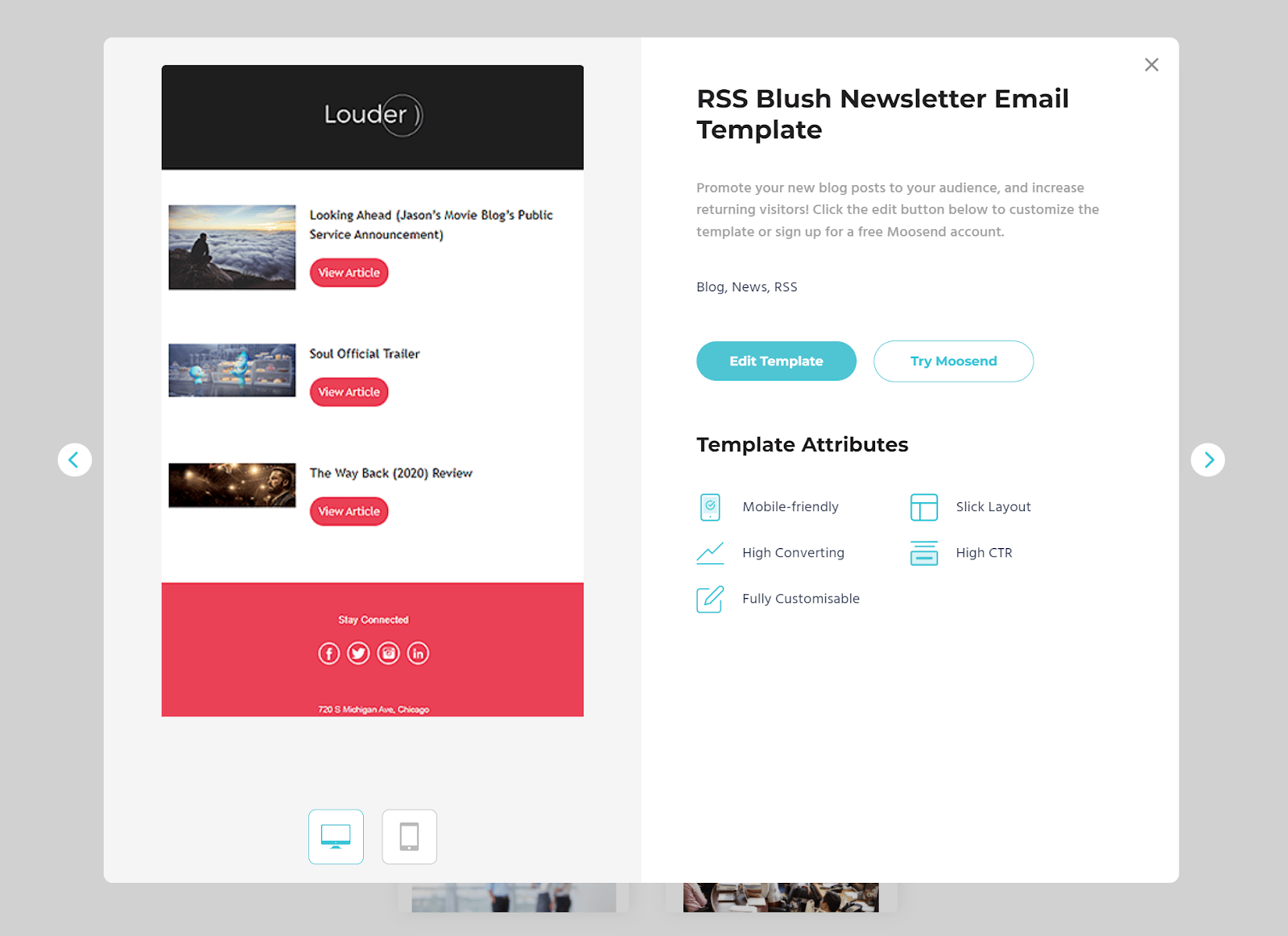
Moosend’s all-in-one email marketing platform will help you simplify content distribution and help promote your blogs across various channels. The drag-and-drop builder is perfect for beginners and experienced users as you can craft campaigns from scratch or choose one of the available email newsletter templates.
You can set up RSS campaigns to keep your readers in the loop by delivering the latest content the moment you publish it on your website. Then, all you have to do is add your content URL, and let the platform distribute your content on autopilot.
Best For
Moosend’s affordable pricing is ideal for bloggers who want to build their audience and promote their content through email. Apart from the email builder, you can also use the newsletter signup form and landing page editors to expand your subscriber list, and create specific content pages for your readers.
33. BuzzSumo
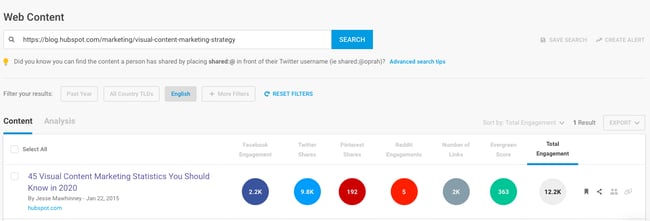
BuzzSumo can help you decide how best to promote your content. You can monitor the performance of your own content to understand what are the ideal days and times of the week to post and what are the ideal lengths of your posts.
In addition to your content, you can also use BuzzSumo to track the performance of content in specific niches or around the web. Just enter a topic or a URL into the BuzzSumo search box and get back a wealth of information —including its share counts across the most popular social media sites. This can help you understand which topics and types of content perform best on different social media platforms.
Best For
We recommend for BuzzSumo for marketers and bloggers who don’t have a preferred performance tracking tool. For instance, if you’re already using a plugin or content management system that measures engagement metrics for your content, you may not need BuzzSumo. But if you find the analytics user interface difficult to read or sift through, then BuzzSumo is worth checking out.
34. Buffer
After hours of researching and writing, the idea of uploading your blog posts to multiple social media platforms can be overwhelming. If your blogging platform doesn't include built-in social tools, then you can use a third-party tool like Buffer to automate this process.
Buffer allows you to schedule your blog’s post to different social channels. You can even schedule them to send multiple times, using different headlines and images each time.
Best For
Buffer’s low price point and powerful features make it a great choice for freelance bloggers and marketing teams at small businesses. However, if you’re already using a tool such as Marketing Hub to schedule your posts in advance, you might not need Buffer.
35. Movavi Video Editor
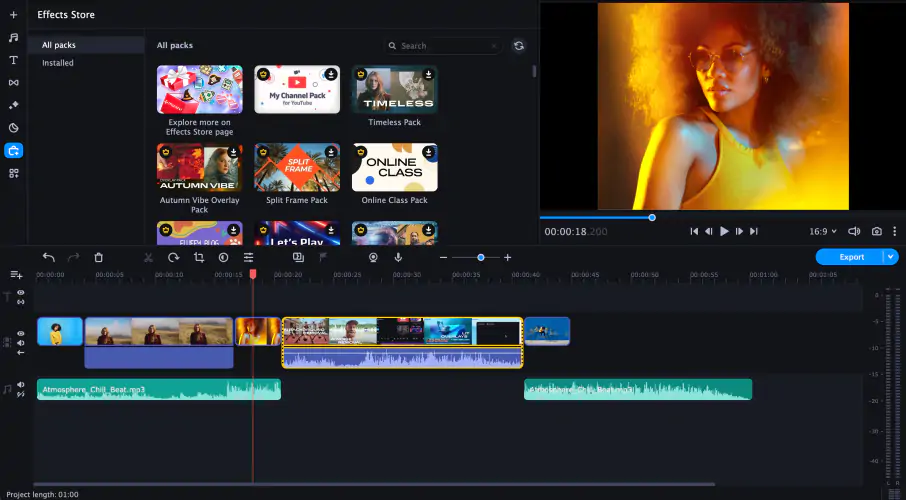
Movavi Video Editor is an all-in-one visual content creation tool that caters to bloggers and marketers looking to enhance their visuals with ease. Its variety of powerful and user-friendly photo editing functions includes AI auto enhance, quick image background removal, AI restoration of old photos, 100+ effects and filters, and precise object removal, among others. These features help optimize colors and contrast, remove unwanted elements, and apply artistic filters, all without consuming hours of editing time.
Movavi Video Editor also provides users with stock photos for added convenience. To add videos to your blog, the tool offers screen recording, background removal, noise removal, and 8x upscaling, enabling the creation of engaging and professional-looking video content.
Best For
Movavi Video Editor is an ideal solution for beginner bloggers and marketers who want to incorporate videos into their content but find professional software like Adobe Photoshop and Final Cut Pro too hard to handle. With its intuitive interface and powerful features, Movavi is an excellent tool to quickly edit photos and videos for your blog without spending hours learning complex software.
Start Growing Your Blog Today
Use the tools above to create image-rich content, optimize your on-page SEO, analyze your website’s performance, and promote your blog on social media will help increase your website’s traffic. Also, make sure you're using a CMS platform that integrates with these tools and comes with some out-of-the-box SEO functionality. By investing in blogging in this way, you'll increase your ROI and create lasting, positive impact at your company.
Editor's note: This post was originally published in October 2019 and has been updated for comprehensiveness.

